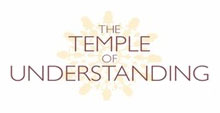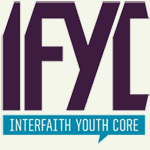THE BIG PICTURE
Marcus Braybrooke, Paul Chaffee, Julian Foley, Bud Heckman, Dan Pawlus, Kusumita Pedersen, Amelia Perkins, and Alison Van Dyk contributed to this story and the five attached profiles.





In last month’s TIO, Marcus Braybrooke wrote a brief history of the interfaith movement since 1893. He tells how major interfaith organizations emerged in the twentieth century, starting with the International Association for Religious Freedom (IARF), whose roots go back to 1900. The World Congress of Faiths, celebrating its 75th birthday this year, was the first established organization to invite all people of faith and practice to a shared table of dialogue in the “spirit of fellowship.” Both IARF and the Congress remain active international organizations, a tribute to the resilience of their hope for a happier religious future.
The past fifty years have witnessed a proliferation of interfaith organizations. Where there were hundreds, today we have thousands. In this vast array, several dozen are particularly influential.
This issue of TIO introduces five such organizations, chosen in part because each plays a distinctive role in interreligious culture today. Each has a considerable global constituency, a unique strategic approach, and a history of significant achievements. Seeing them cheek by jowl, the scope and promise of the interfaith movement comes clearer.
Five that Stand Out
- The Temple of Understanding is the smallest but oldest of our profiled organizations. It made the list by dint of its pioneering role and a continuing series of vital programs in New York City and around the world. This included serving as an incubator for the North American Interfaith Network, featured elsewhere in this issue, and building abiding relationships with the United Nations.
- Religions For Peace (RFP) is the world’s largest interfaith organization, supporting hundreds of programs in 86 countries, primarily focused on peace, ending poverty, and healing the Earth. A second factor sets RFP aside from the rest on this list: its participants represent and speak for their traditions. So RFP participants tend to be high up and official, not grassroots and local. Increasingly, it can be noted, RFP is in dialogue with grassroots interfaith efforts large and small, a constructive step towards making a positive difference in the world.
- The Council for a Parliament of the World’s Religions sponsors the largest and most inclusive interfaith gathering in the world, held once every five years. Modern Parliaments are grassroots in nature, and anyone can attend regardless of affiliation—a huge shift from the first Parliament in 1893, in which participants were formal representatives of their traditions. In between Parliaments, CPWR organizes with cities and local leaders around the world to help make their communities more cohesive.
- United Religions Initiative was inspired by peacemakers in the UN and the dream that religious folk could learn to be active peacemakers. An organization was grown, not built, that welcomed interfaith groups everywhere to be networked in the cause. URI’s remarkable Charter was signed in 2000. Today this collaborative of nearly 600 self-generating, self-governing, and self-funded “Cooperation Circles” is posting powerful stories of interfaith success in places like Manila, Kampala, and Islamabad.
- Interfaith Youth Core is the youngest organization on the list and brings new energy and enthusiasm to the movement. It is intensely focused on its mission, to make interfaith cooperation a social norm, and on training young adult leaders. This tight focus has helped IFYC do better than most interfaith efforts in terms of its funding and development. In the past few years it has been getting the kind of exposure most interfaith causes only dream about.
These organizations are utterly distinct from each other. They share similar visions but they don’t compete. They agree on most of their values but live into the values in different ways. Often they collaborate, but each has its own measures for success. ‘Holistic’ comes to mind, not ‘monolithic.’
Most activists get their interfaith feet wet in one, maybe two organizations. But just as you can’t understand religion knowing but a single tradition, you’ll misunderstand interfaith culture until you experience the multiple possibilities it offers. Then perspectives widen, opportunities multiply, and new friendships develop. Organization becomes personal and, one hopes, empowered.
